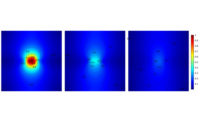
DURHAM, UK-Bede X-ray Metrology, a global provider of X-ray metrology systems to the semiconductor industry, shipped a BedeScan Defect Detection and Inspection System to Nippon Steel Technoresearch Corp. (NSTR, Japan) in December 2006. The BedeScan, based on a patented nondestructive X-ray Diffraction Imaging technique (XRDI), will be used to look at surface and buried crystallographic defects in silicon and silicon carbide wafers.
Tomiyoshi Masuda, NSTR president, says, “We chose the BedeScan system because of its ability to provide high resolution images of crucial defects in semiconductor wafers. The advantage of the BedeScan is that it allows us to better visualize buried defects in wafers, as well as those on the surface. Such defects may go undetected with traditional inspection methods that have been used in the past. In addition, the system also allows us to look at new classes of wafer edge defects that can lead to device failure. The BedeScan will be a worthwhile investment for both us and our customers.”
Jim Polasik, chief operating officer, Bede X-ray Metrology, says, “I am delighted that NSTR have chosen the BedeScan for their defect detection needs. The BedeScan is addressing the problems being encountered at the new technology nodes, including the monitoring of nonvisual, buried defects to prevent wafer breakage during ultrafast anneal. We are now seeing that its inspection capability on both bare and patterned 300-millimeter wafers is challenging conventional semiconductor wafer inspection systems, and delivering substantial savings. NSTR is one of the leading material research centers in Japan, with more than 20 years experience, and it is exciting to know that the BedeScan system will be assisting them in their continued success.”
X-ray diffraction imaging is recognized as a powerful tool for directly imaging defects in single crystals, such as semiconductor substrates and epitaxial thin films. The BedeScan provides comprehensive crystallographic defect inspection solution to monitor wafer quality in incoming wafers as well as during processing and mechanical handling. It is capable of qualifying and monitoring process tools at any technology node, including 65 nanometers and below, therefore reducing cycle times and facilitating fab expansions.


